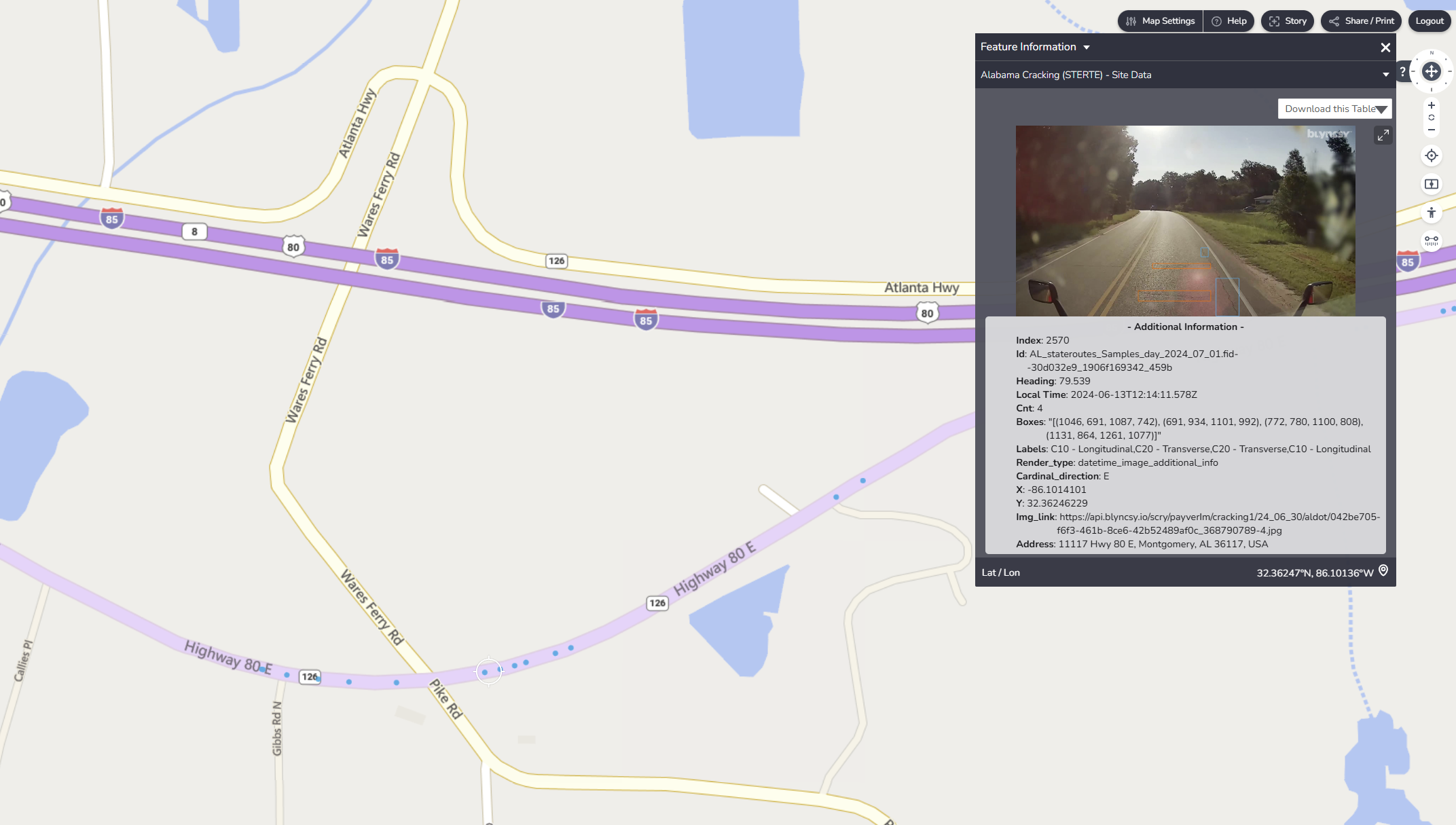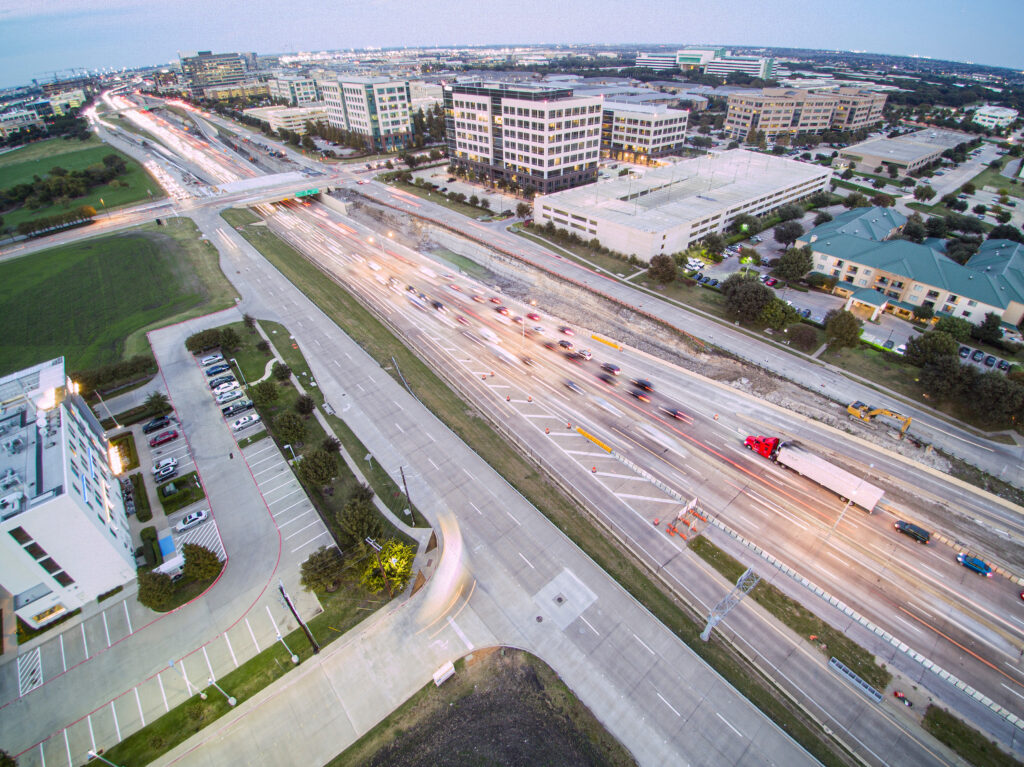Active Projects | Alabama Department of Transportation

Alabama’s AI approach to road asset inventory and assessment
Region
Alabama
Country
US
Agency
Department of Transportation
In this Article
Share ⟶

Solving Unique Challenges
The Alabama Department of Transportation (ALDOT) maintains over 11,000 miles of state roads, including all interstate and state routes, and sees nearly 1,000 traffic fatalities on their roadways annually. Most of these deaths, 59%, occur in rural areas—with roadway and lane departure crashes accounting for 24% of all fatal crashes. As part of the state’s Strategic Highway Safety Plan (SHSP), ALDOT is targeting infrastructure-related causes of these crashes and infrastructure-based safety countermeasures to reduce the number and severity of traffic accidents. To understand how various roadway features contribute to these crash statistics, ALDOT needs to conduct accurate and consistent roadway asset inventory, condition assessments, and maintenance.
Elements like pavement markings, signage, and guardrails are critical safety countermeasures to prevent vehicles from colliding and striking dangerous roadside hazards. Without an inventory and precise location of these types of assets, their damage often went undetected until a collision occurred. This lack of foundational data prevented ALDOT from proactively managing [their] safety infrastructure, a gap noted in the state’s SHSP. To ensure roadway structural integrity and safety for travelers, as well as preserve long-term resilience of the state’s roads, ALDOT embarked on a project to evaluate a smart, data-driven approach to roadway asset management and maintenance.
Manual workflows and network scale
Traditionally, ALDOT teams manually drove lengthy roadway networks to survey assets and perform asset health assessments, which often either overlooked potential damage and/or provided subjective asset health scoring. The network scale made traditional inspection methods—such as manual patrols or lidar surveys—expensive, time-consuming, risky for personnel, and logistically impractical for network-wide assessment, as scoring was not done empirically, person to person. These methods were not only costly, laborious, and inefficient, but the resulting inaccuracies and data gap failed to ensure roadway safety, posing direct risks to motorists.
To address these shortcomings, ALDOT initiated a pilot project to test an AI-powered approach that focused primarily on identifying and assessing the guardrails along four key roadways, recognizing that damaged guardrails were critical to avoiding and decreasing the severity of lane and roadway departure-related accidents. The project surveyed key state routes east of Montgomery: AL-108, AL-110, AL-126, and AL-293. To detect the presence and length of the guardrails, pinpoint the exact location of any damage, calculate a deficiency score for each guardrail segment, and identify key safety components such as impact attenuators, ALDOT needed advanced roadway mapping, imaging, and condition assessment technology.
Project Overview
- ALDOT operates and maintains over 11,000 miles of state roads and sees nearly 1,000 traffic fatalities on their roadways annually.
- To improve condition monitoring and safety, ALDOT conducted automated roadway inspection and analysis along four key routes, with a main focus on guardrails.
- Using Blyncsy, they collected and analyzed crowd-sourced images to assess guardrails, pavement condition, vegetation encroachment, debris, and signage.
Leveraging Blyncsy for AI-powered infrastructure assessment
ALDOT selected Blyncsy, leveraging its crowd-sourced imagery and AI features to automate detection and inspection of guardrails along the selected routes. The solution allowed ALDOT to equip standard vehicles with high- resolution dashcams to capture imagery of the road network and process the images into AI models. From the same data collection pass, Blyncsy also analyzed the imagery to detect and log other critical roadway conditions, including vegetation encroachment, debris, pavement condition, and road sign presence, classification, and damage
Blyncy’s computer vision, machine learning algorithms, and AI models analyzed every image for guardrail detection and analysis, as well as for other aforementioned roadway assets along the four corridors. The automated, AI-based solution empowered ALDOT with rapid, accurate asset inventory and deficiency detection. This data empowers transportation authorities to prioritize maintenance efforts effectively and make informed decisions on resource allocation. Implementing Blyncsy for their forward-thinking, performance-based budgeting approach to asset management provided ALDOT the precise asset locations and severity of damage, along with objective asset health scores.
Driving smart, modern strategies to transportation safety
The pilot project successfully delivered the first-ever comprehensive, location-aware inventory and condition assessment of guardrails for the surveyed routes. By automatically capturing and modeling other critical roadway assets along the same data collection pass, Blyncsy provided ALDOT with a holistic view of those highways’ safety risks. The AI-powered solution closes the data gap that existed using manual inspections, minimizing and potentially avoiding collisions caused by damaged infrastructure. Blyncsy’s detections were within 3% of ALDOT’s own field data surveys and achieved such accuracy at a fraction of the cost of their traditional workflows.
Through smart digital insight, ALDOT shifted their asset management methods from reactive to proactive, allowing them to reallocate human capital from the labor-intensive task of finding problems to the essential work of fixing them. Knowing the precise location and extent of damage with an objective asset deficiency score optimizes ALDOT’s maintenance activities and minimizes operational costs, enabling them to prioritize resources on areas needing immediate attention, ultimately leading to safer, more efficient, and sustainable transportation networks. The rich dataset provides the foundational inventory needed to implement a modern, systemic safety program, directly supporting the goals of Alabama’s SHSP. Following the successful pilot, ALDOT is evaluating the results with the intent to expand the program across all state-maintained roads, creating a comprehensive digital record of its safety assets.








